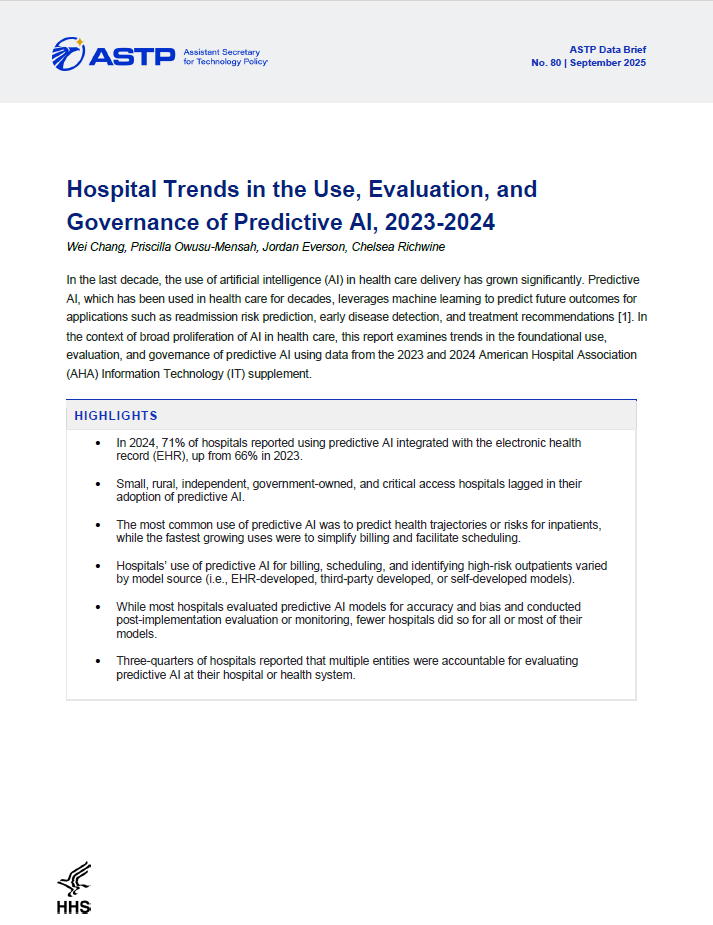
In the last decade, the use of artificial intelligence (AI) in health care delivery has grown significantly. Predictive AI, which has been used in health care for decades, leverages machine learning to predict future outcomes for applications such…
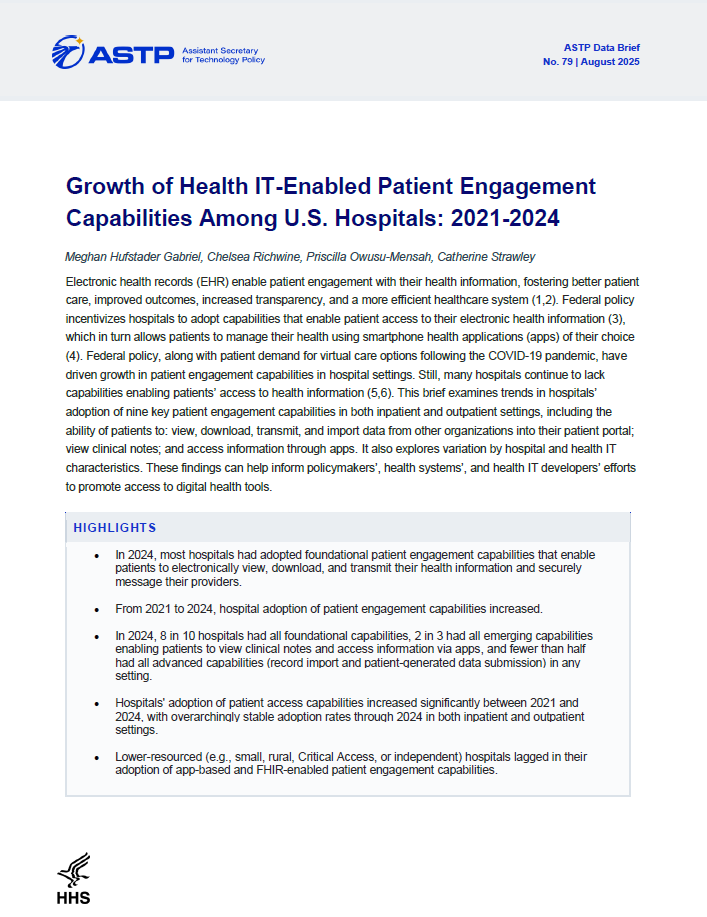
Electronic health records (EHR) enable patient engagement with their health information, fostering better patient care, improved outcomes, increased transparency, and a more efficient healthcare system (1,2). Federal policy incentivizes hospitals to…
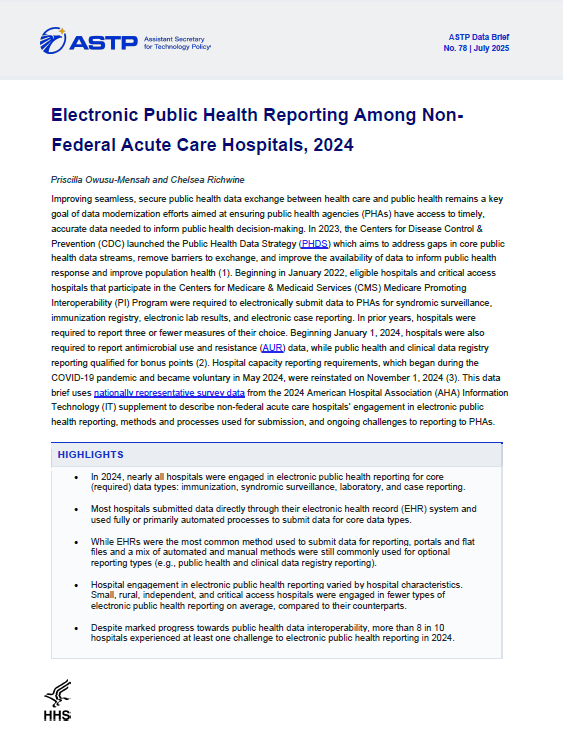
Improving seamless, secure public health data exchange between health care and public health remains a key goal of data modernization efforts aimed at ensuring public health agencies (PHAs) have access to timely, accurate data needed to inform…
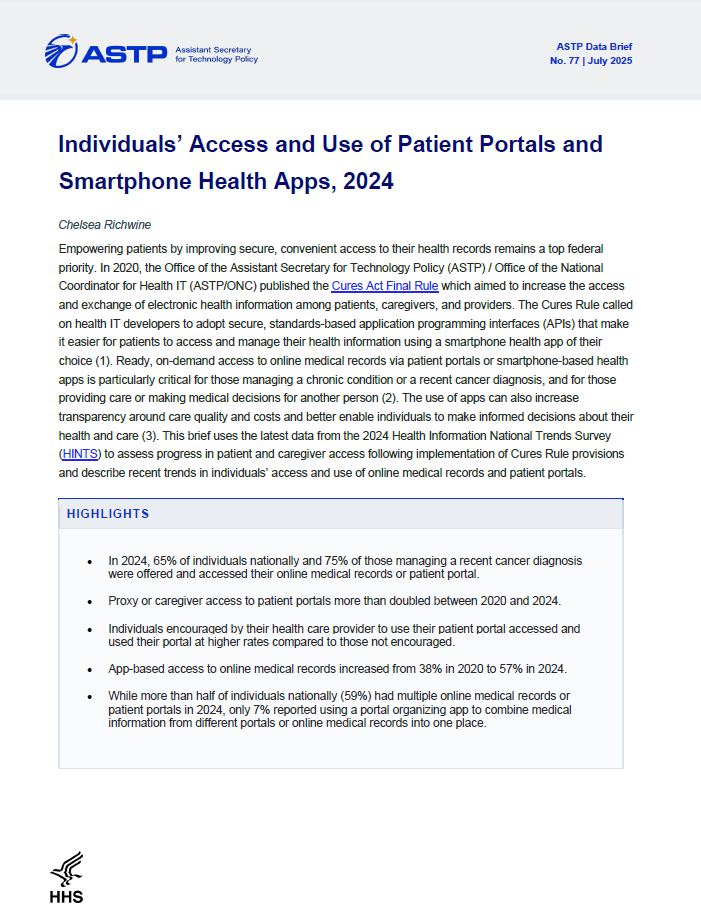
Empowering patients by improving secure, convenient access to their health records remains a top federal priority. In 2020, the Office of the Assistant Secretary for Technology Policy (ASTP) / Office of the National Coordinator for Health IT (ASTP/…
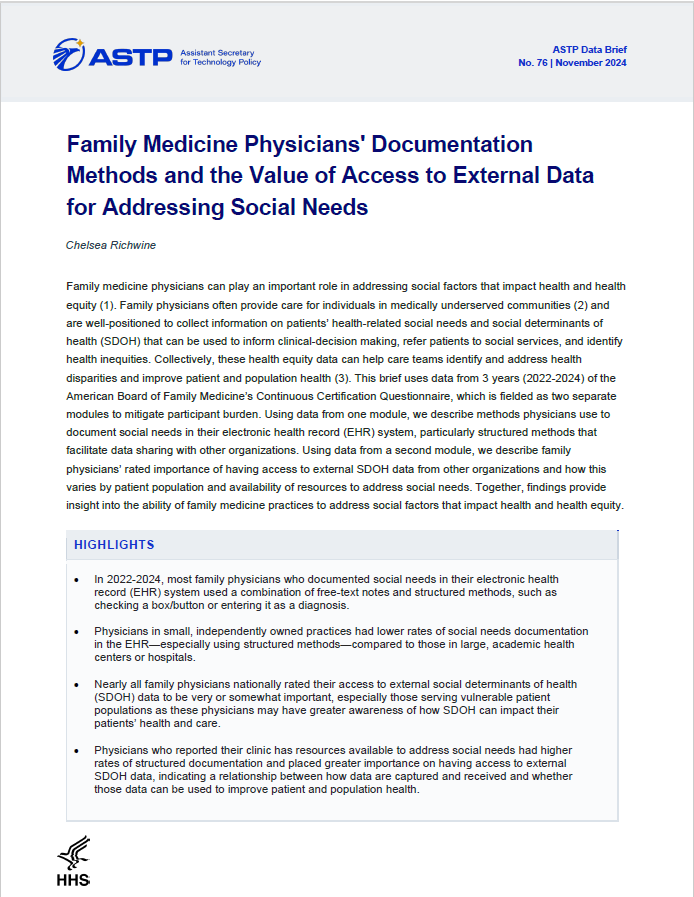
Family medicine physicians can play an important role in addressing social factors that impact health and health equity (1). Family physicians often provide care for individuals in medically underserved communities (2) and are well-positioned to…
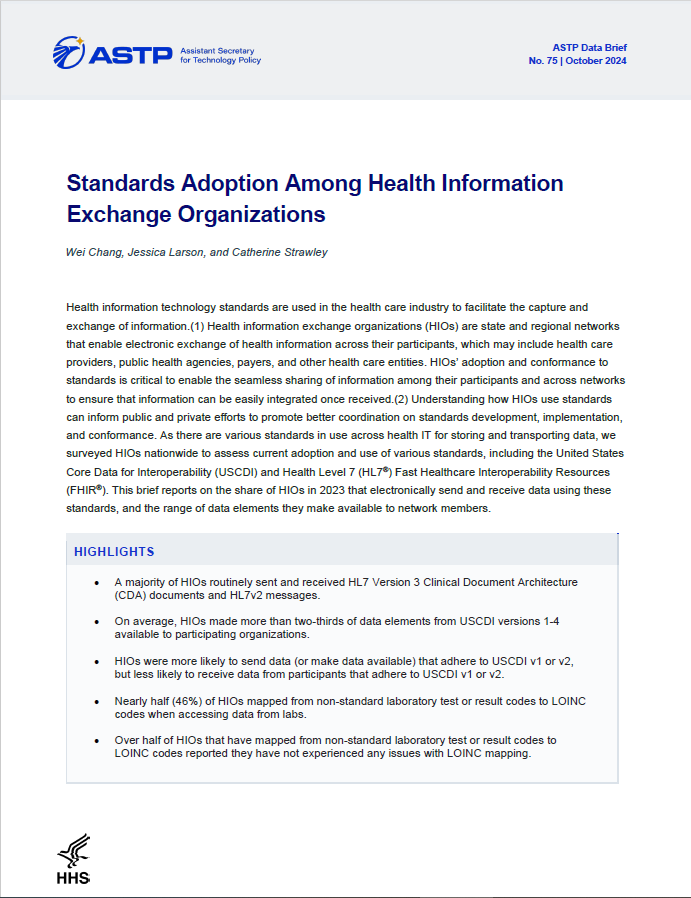
Health information technology standards are used in the health care industry to facilitate the capture and exchange of information.1 Health information exchange organizations (HIOs) are state and regional networks that enable electronic exchange of…
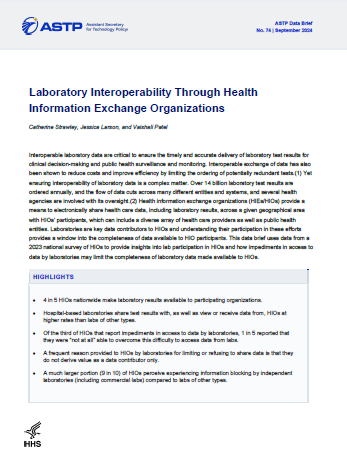
Interoperable laboratory data are critical to ensure the timely and accurate delivery of laboratory test results for clinical decision-making and public health surveillance and monitoring. Interoperable exchange of data has also been shown to reduce…
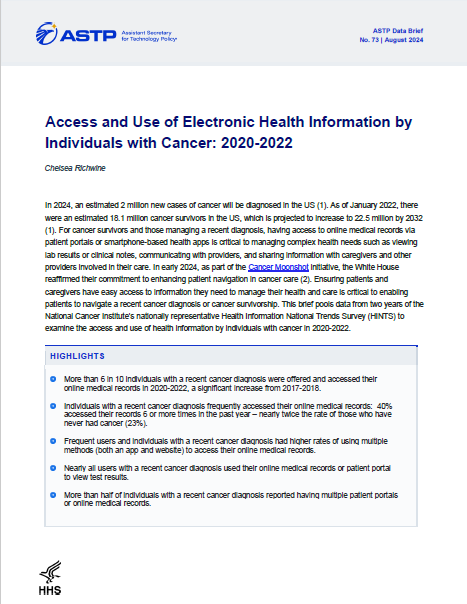
In 2024, an estimated 2 million new cases of cancer will be diagnosed in the US (1). As of January 2022, there were an estimated 18.1 million cancer survivors in the US, which is projected to increase to 22.5 million by 2032 (1). For cancer…
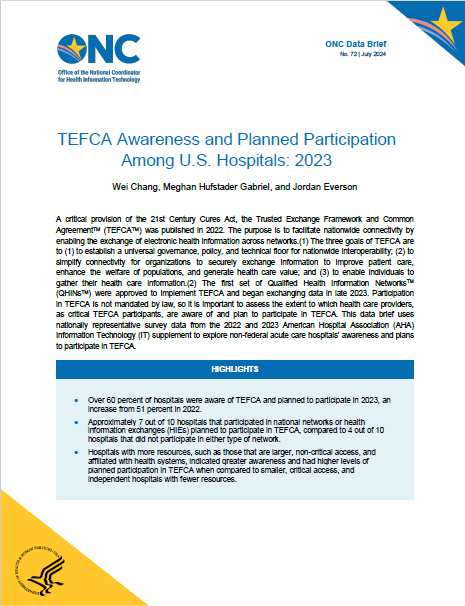
A critical provision of the 21st Century Cures Act, the Trusted Exchange Framework and Common AgreementTM (TEFCATM) was published in 2022. The purpose is to facilitate nationwide connectivity by enabling the exchange of electronic health information…
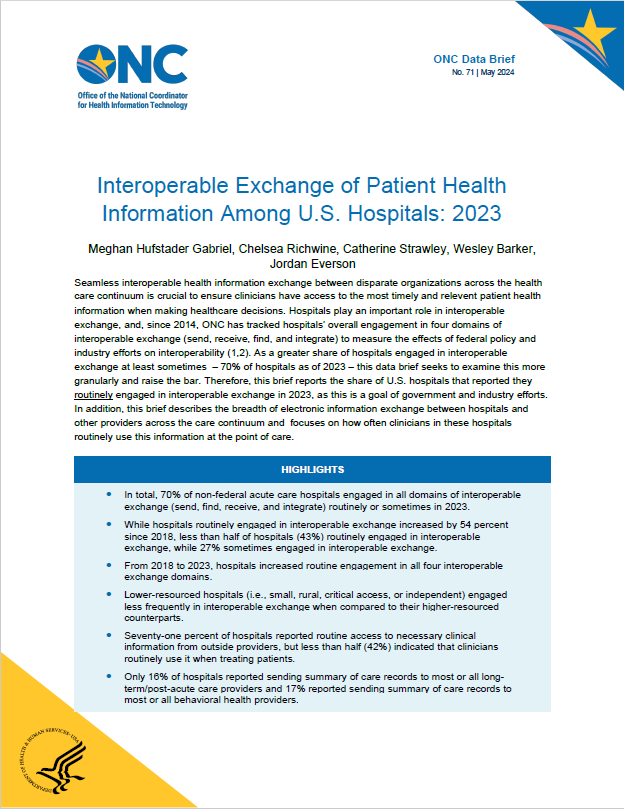
Seamless interoperable health information exchange between disparate organizations across the health care continuum is crucial to ensure clinicians have access to the most timely and relevent patient health information when making healthcare…
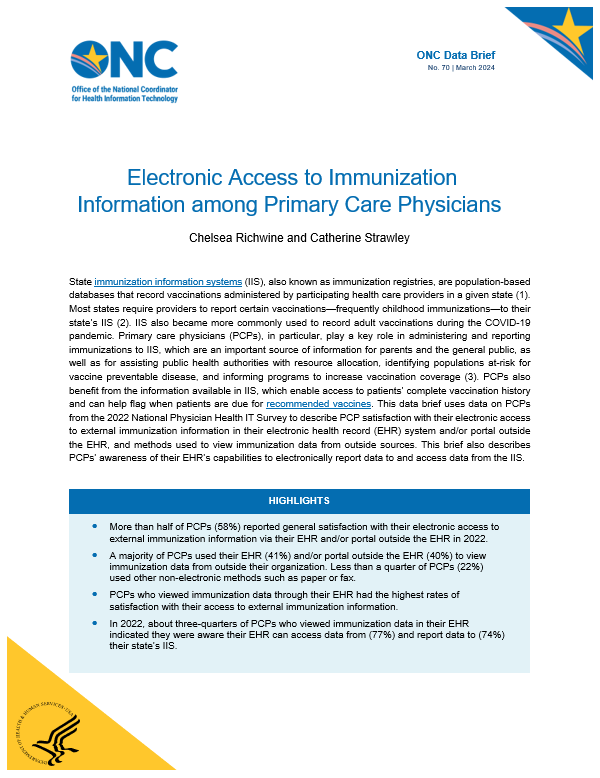
State immunization information systems (IIS), also known as immunization registries, are population-based databases that record vaccinations administered by participating health care providers in a given state (1). Most states require providers to…
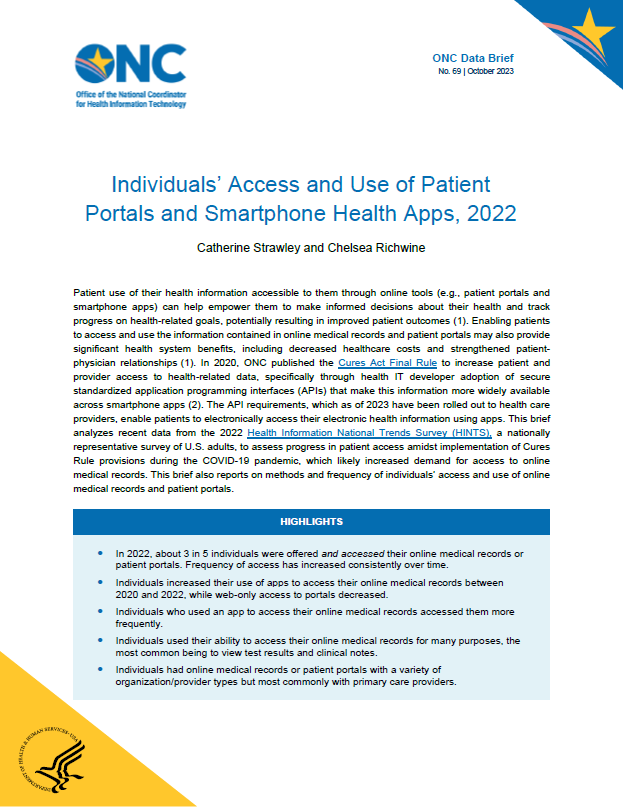
Patient use of their health information accessible to them through online tools (e.g., patient portals and smartphone apps) can help empower them to make informed decisions about their health and track progress on health-related goals, potentially…
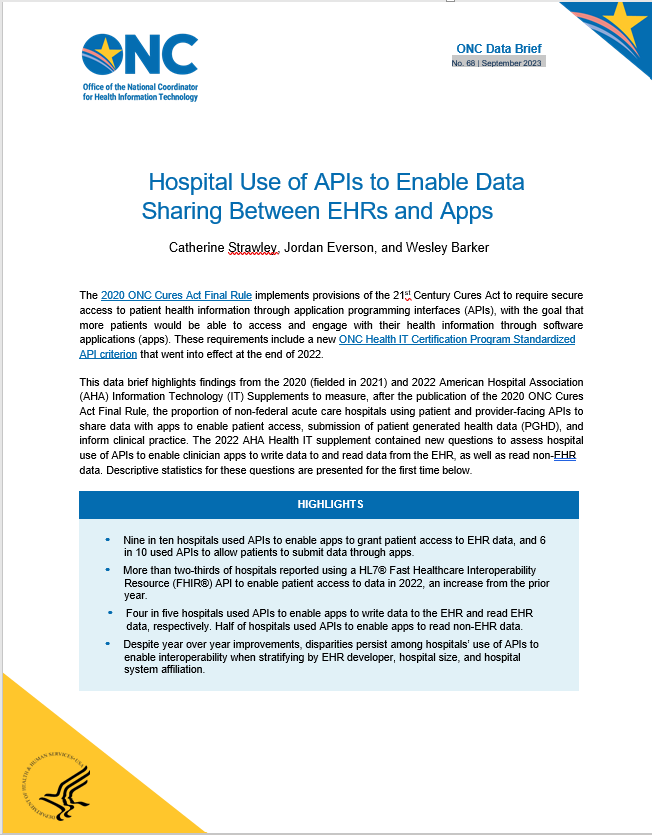
The 2020 ONC Cures Act Final Rule implements provisions of the 21st Century Cures Act to require secure access to patient health information through application programming interfaces (APIs), with the goal that more patients would be able to access…
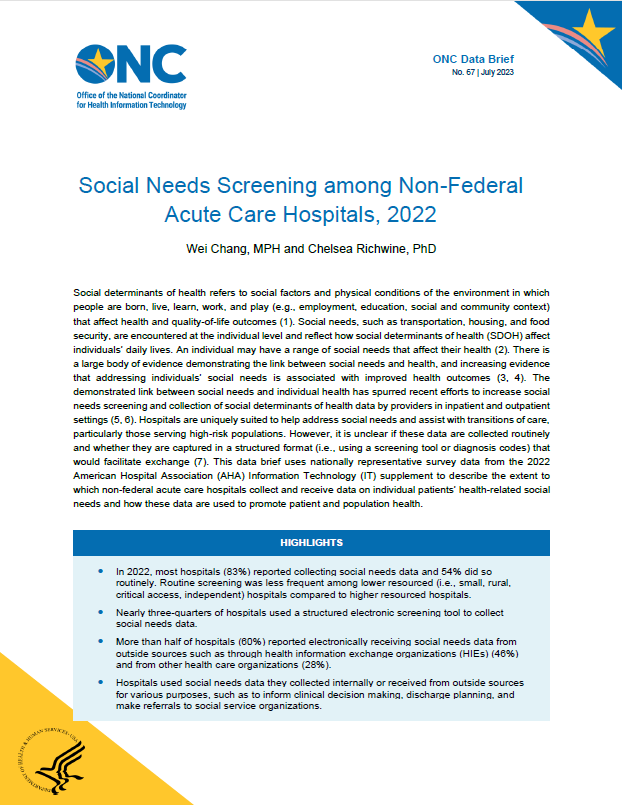
Social determinants of health refers to social factors and physical conditions of the environment in which people are born, live, learn, work, and play (e.g., employment, education, social and community context) that affect health and quality-of-…
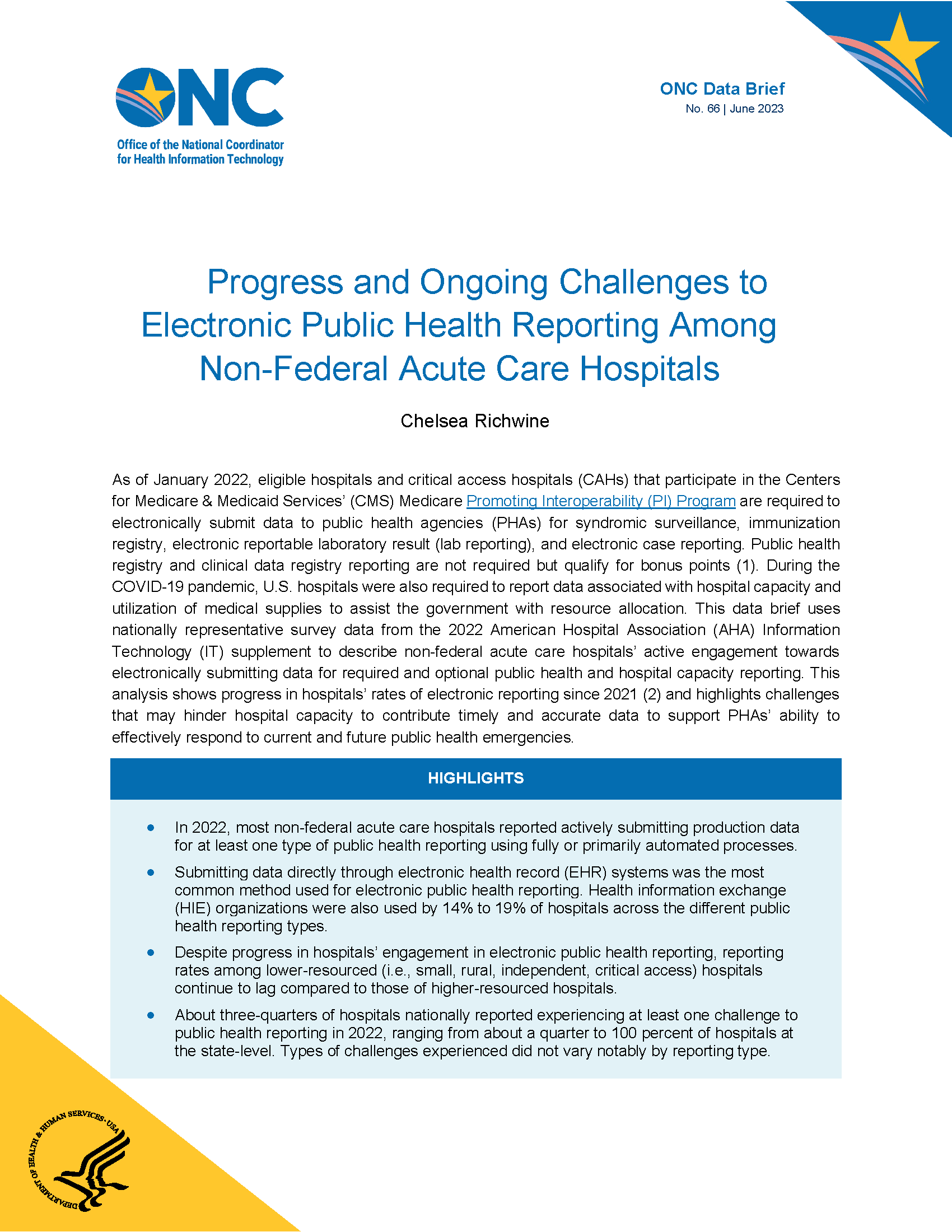
As of January 2022, eligible hospitals and critical access hospitals (CAHs) that participate in the Centers for Medicare & Medicaid Services’ (CMS) Medicare Promoting Interoperability (PI) Program are required to electronically submit data to…
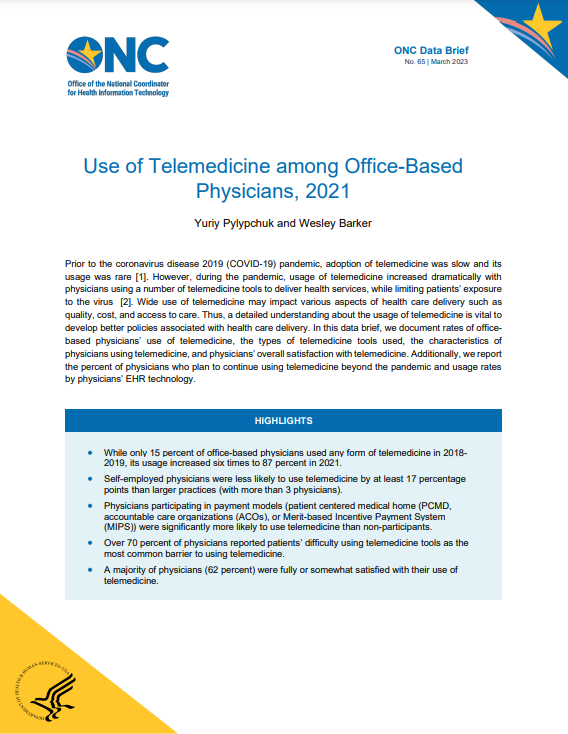
Prior to the coronavirus disease 2019 (COVID-19) pandemic, adoption of telemedicine was slow and its usage was rare [1]. However, during the pandemic, usage of telemedicine increased dramatically with physicians using a number of telemedicine tools…

Interoperable exchange of health information or “interoperability” is critical for delivering appropriate care, reducing health care costs, and making health care more efficient (1-3). ONC is executing on a number of health IT provisions from the…
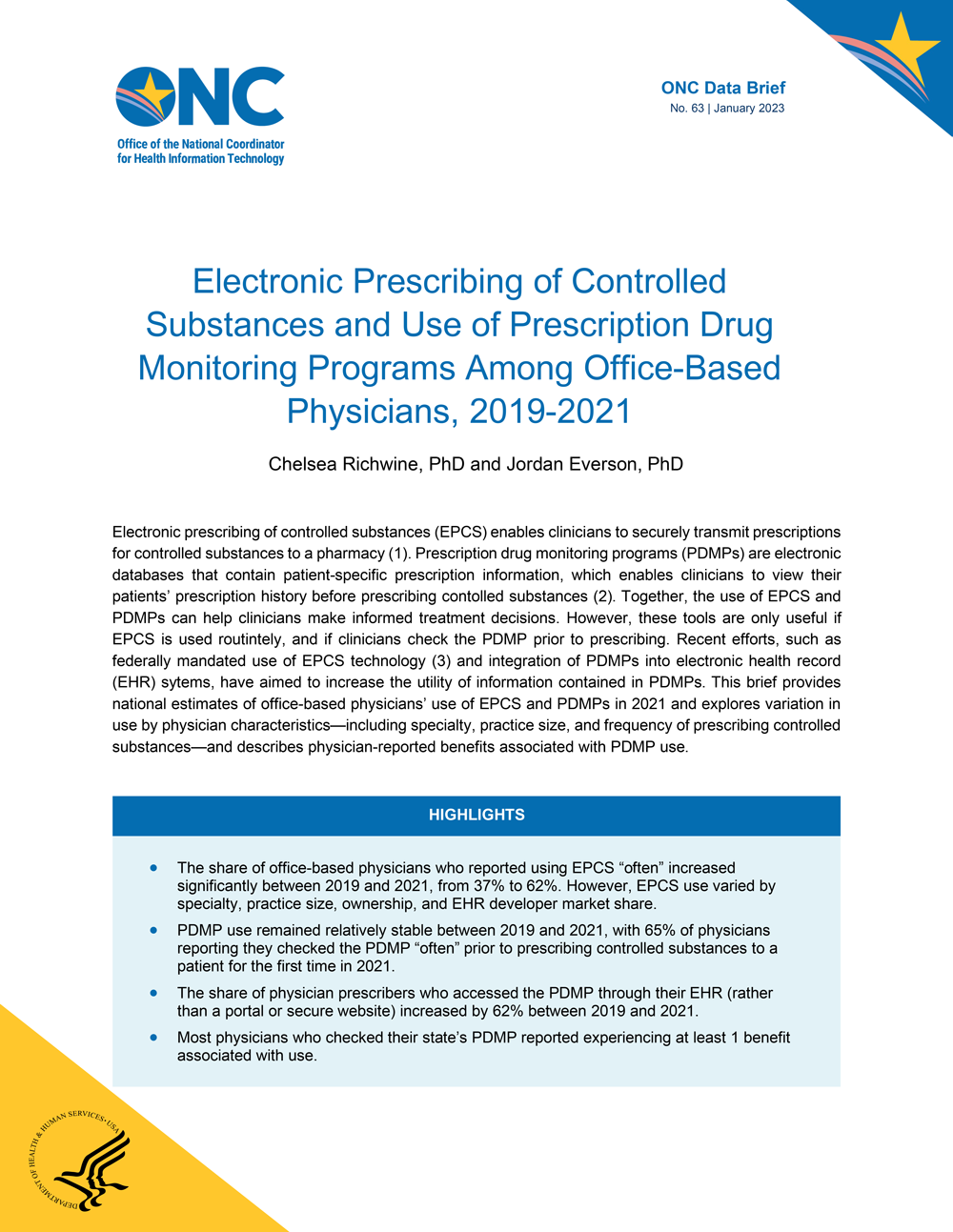
Electronic prescribing of controlled substances (EPCS) enables clinicians to securely transmit prescriptions for controlled substances to a pharmacy (1). Prescription drug monitoring programs (PDMPs) are electronic databases that contain patient-…

